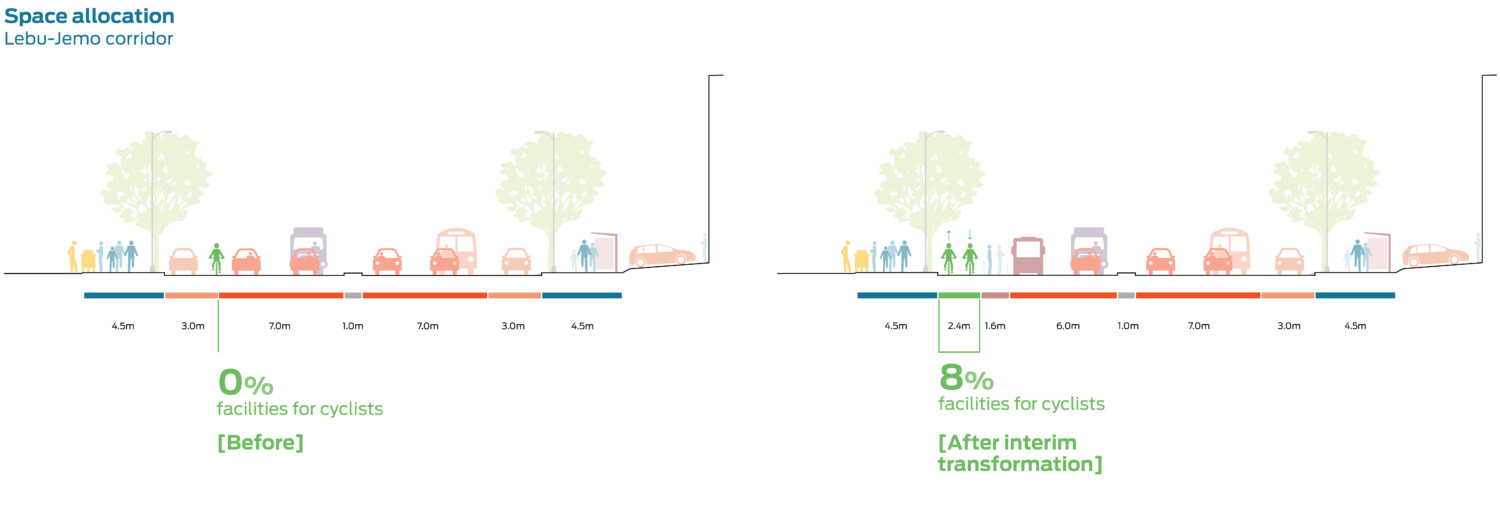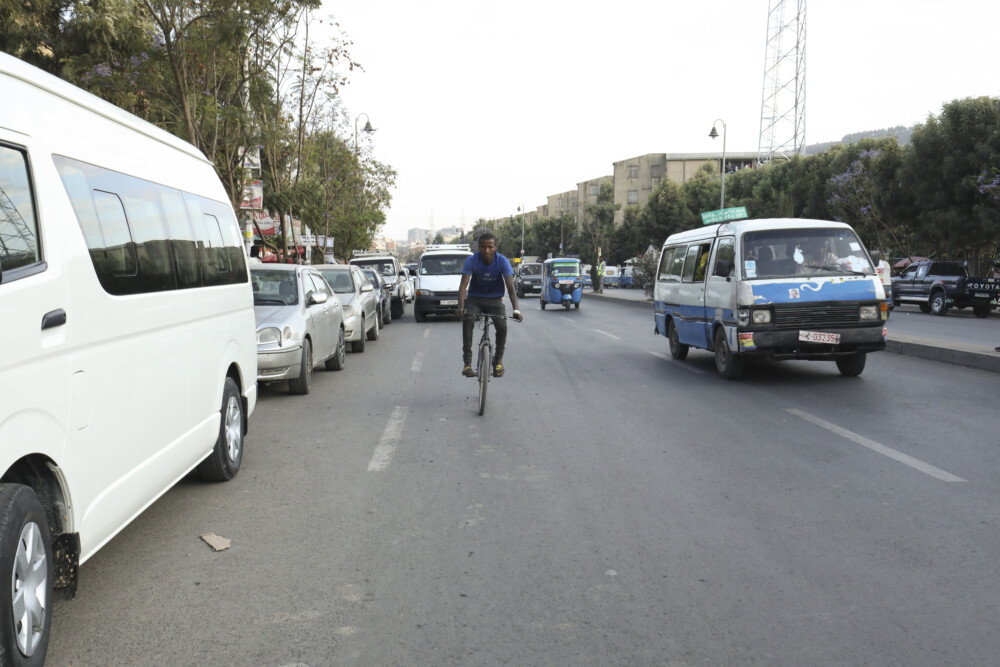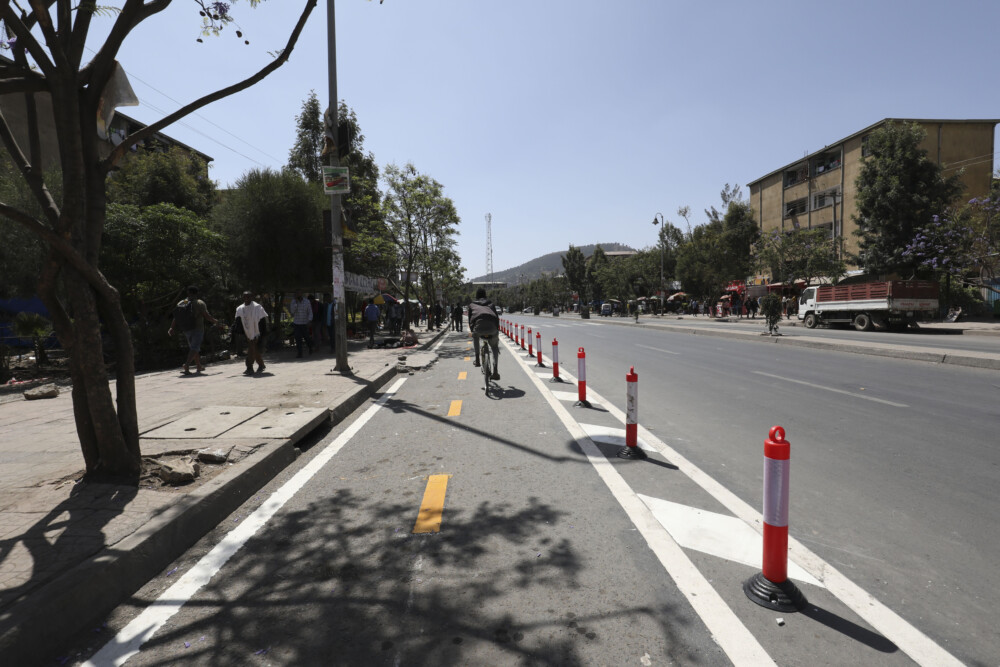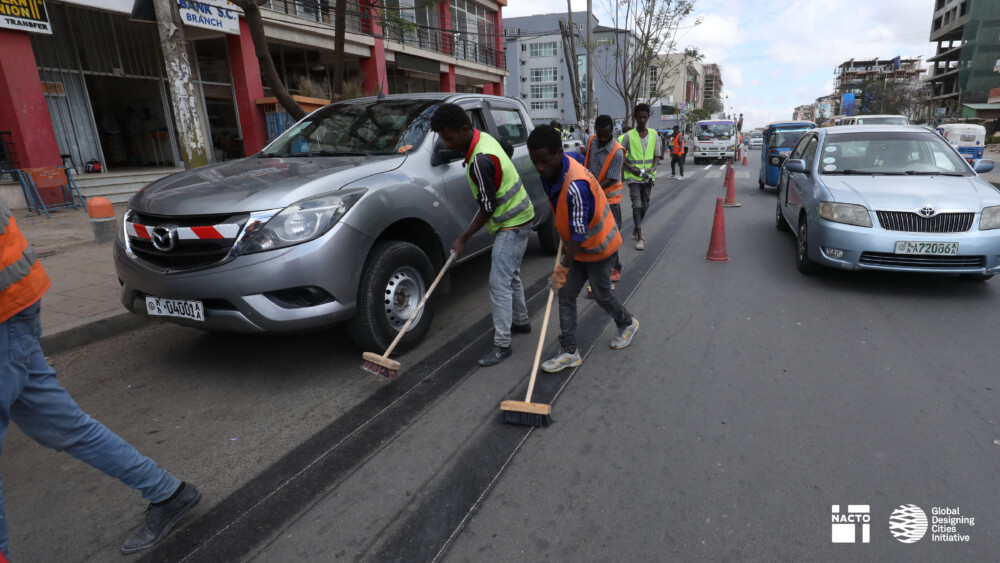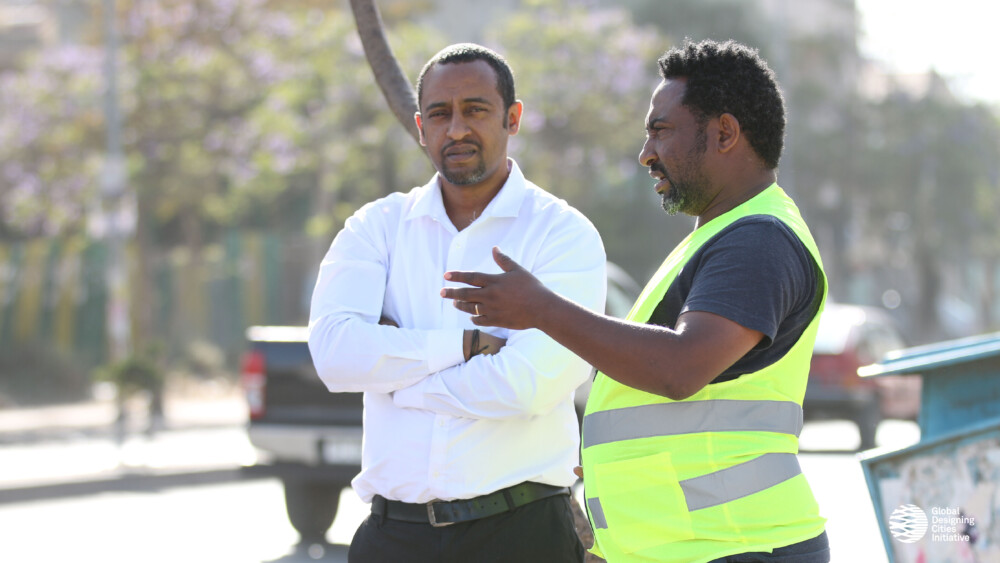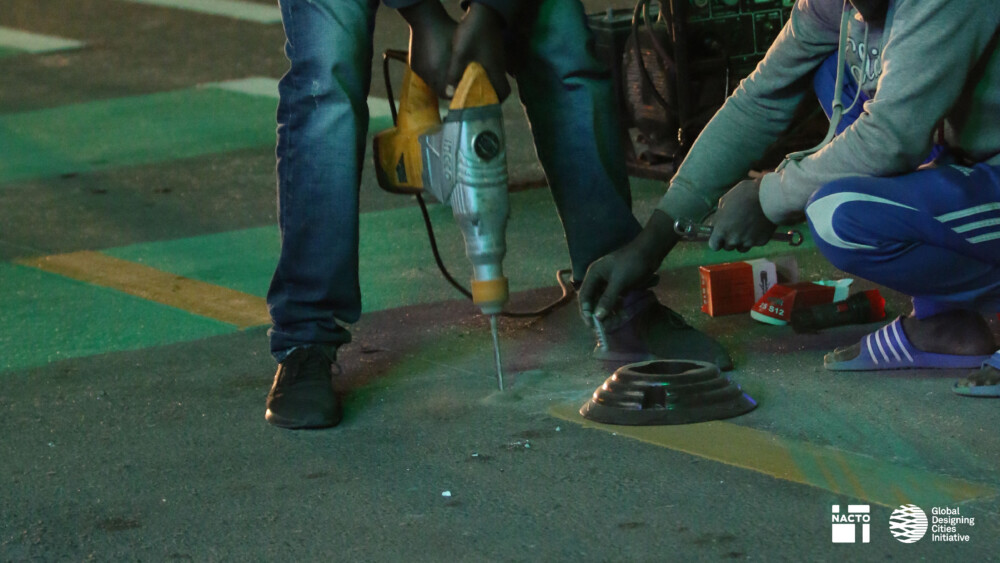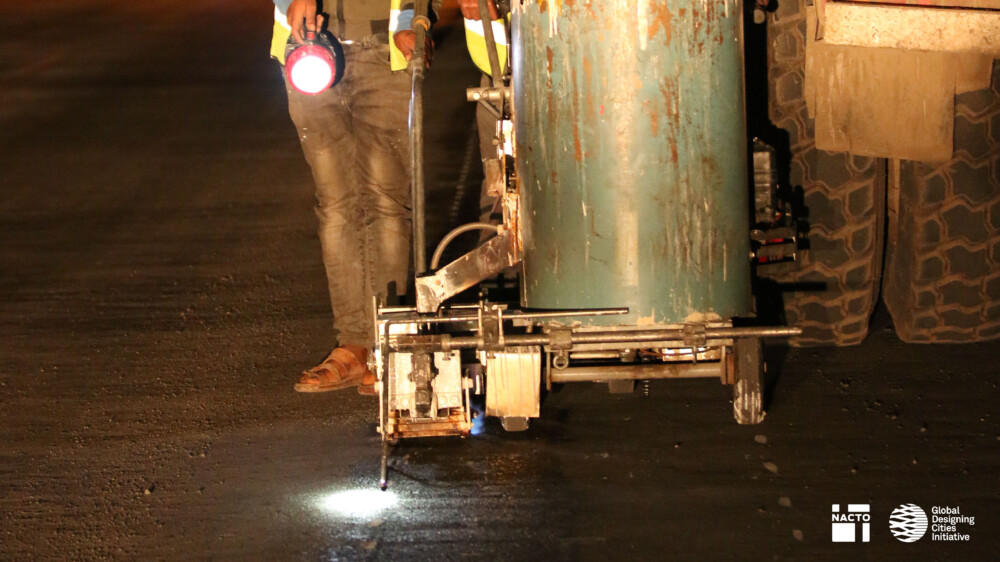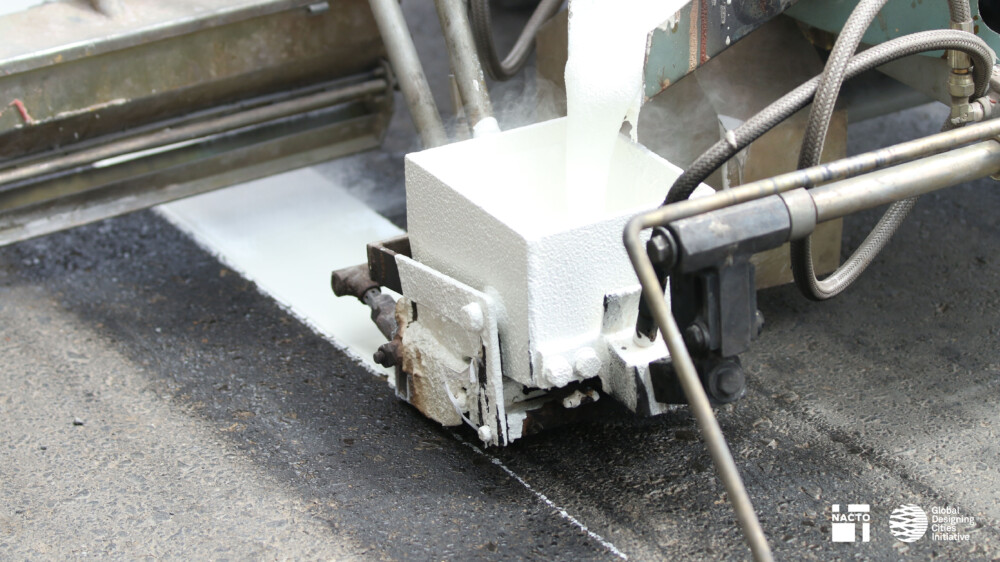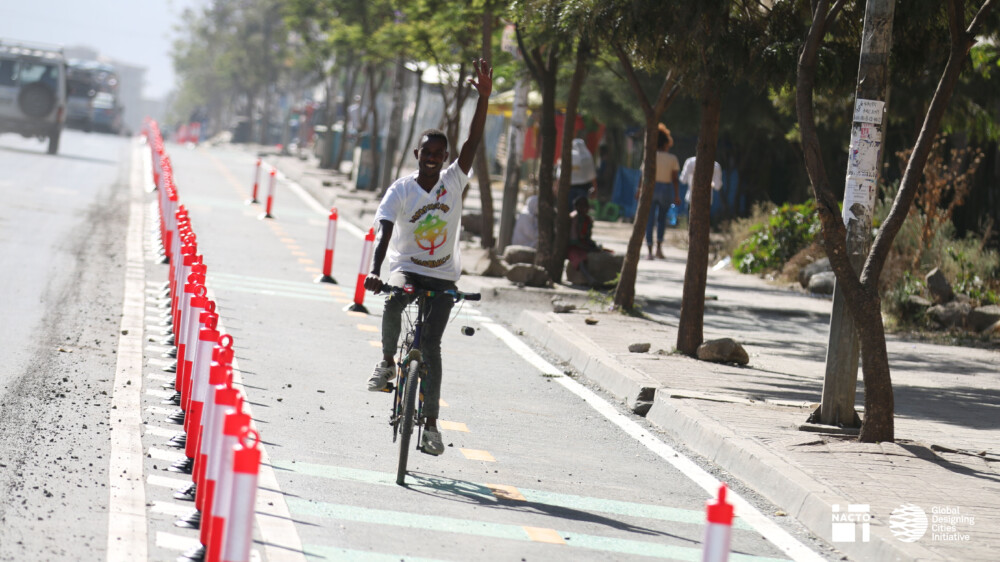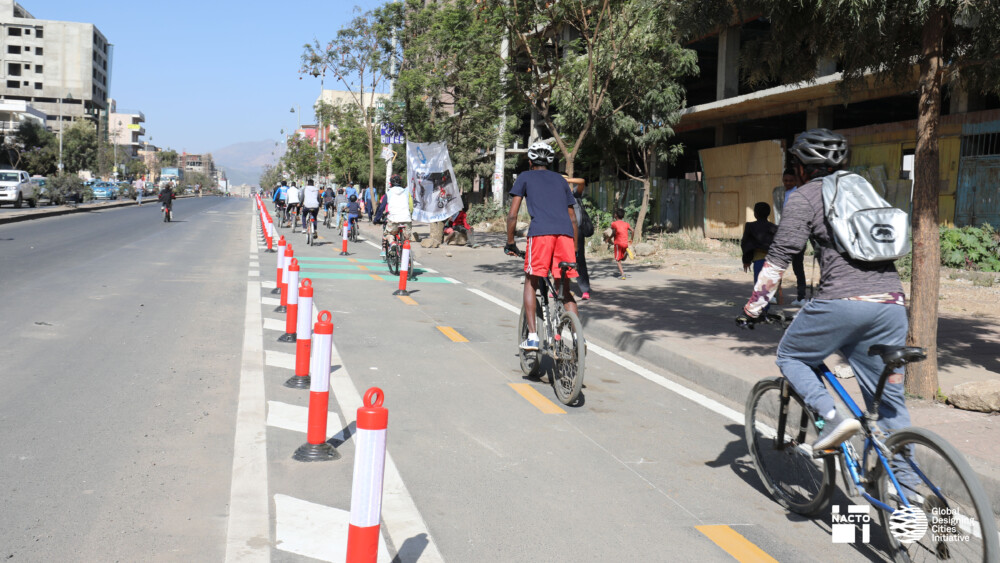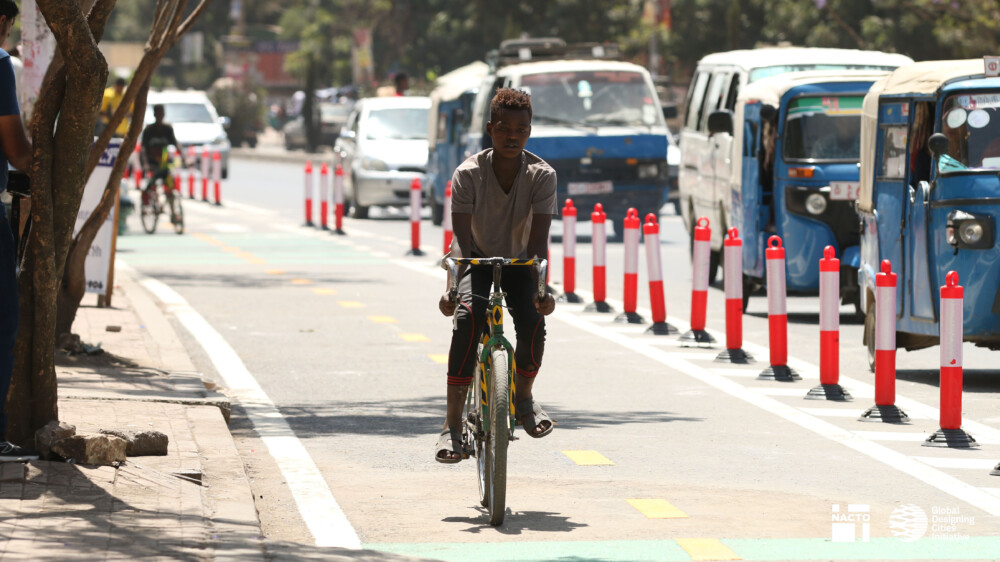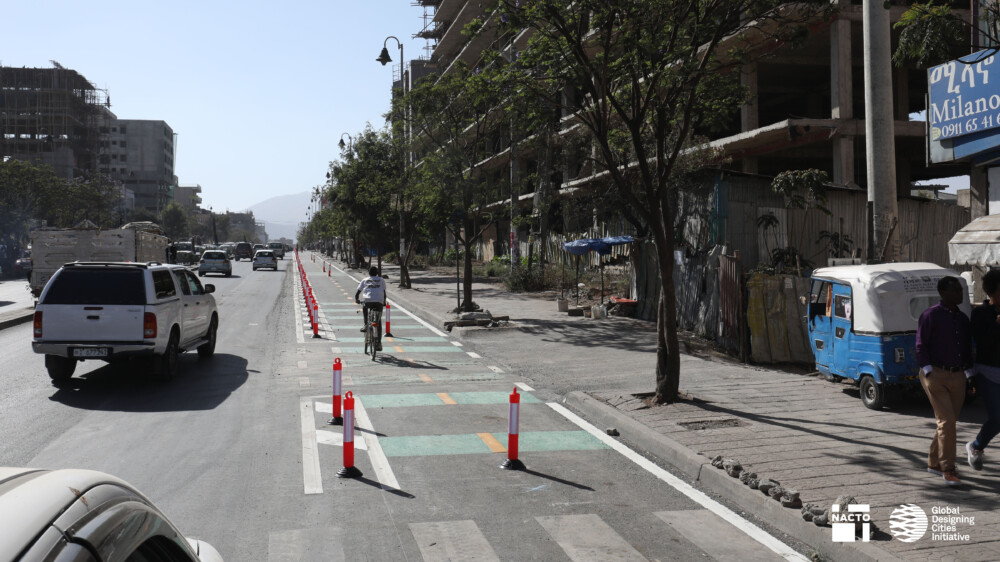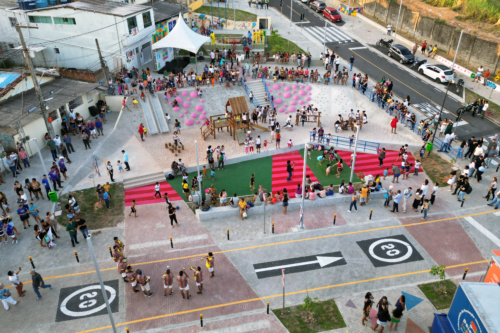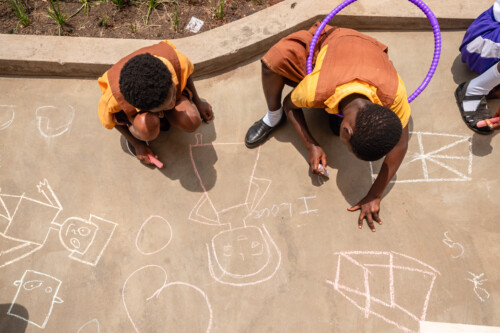Under the Non-motorized Transit (NMT) Policy for Addis Ababa, the city has committed to building 100 km of cycle lanes in the next 3 years. As part of the safe Cycling Program, the 3 km Lebu-Jemo cycle corridor was inaugurated as the first step towards this goal.
Click the image above to play a video about the Lebu-Jemo Interim Cycling Corridor
With a rapidly increasing urban population and a current mode share of 70% pedestrians, 26% transit riders, and 4% motorists, Addis Ababa is well-positioned to add cycling as a substantial mode share for their citizens and prevent an increase in private automobile usage.


To increase their investment in sustainable and active mobility, the city developed the NMT Strategy and NMT Implementation Plan for 2018-2023, which lay guidelines to dedicate 30-70% of the roadbed to NMT facilities, based on the contextual conditions. This has given the city a framework for rethinking their existing streets and reimagining what their new streets could look like. The Safe Cycling Program aims not only to help build safe cycling infrastructure but also to communicate the need and benefits of cycling and to help build a cycling culture in Addis Ababa.
After much deliberation between several sites across the city and taking into account the lessons learned from the previous cycle lane attempts, the Lebu-Jemo corridor was selected for the demonstration project. This 3 km stretch in the south-west fringe of the city connects the mid-density residential neighborhoods of Lebu to the small and mid-sized industries in Jemo. Along the corridor, street edges are lined with mixed-use buildings that house stores, cafes, and other conveniences on the ground floors. A three-lane street in either direction was redesigned to accommodate a curb-side bi-directional cycle facility on one side, limiting parking to the other side of the street. The wide travel lanes allowed for a quick transformation of the street section, creating a space for cyclists in this part of the city.
With design support from GDCI, the city detailed the corridor designs and started procurements for the protected cycle lane. The Bloomberg Philanthropies Initiative for Global Road Safety supported the construction of the corridor with over 1400 bollards and lane markings across the 3 km. The Traffic Management Agency and the AARTB led the transformation, with their engineers and ground staff working around the clock for 4 days in order to complete the project. Thermoplastic lane markings along the entire length were complemented with green markings at all intersections and curb-cuts to indicate conflict zones. On-ground and curb-side signs were painted and installed to inform citizens about the new infrastructure on their street.

Apart from street signs, several awareness campaigns, posters, social media posts, and community outreach activities were conducted prior to the construction and continue to be used to educate the public about the long-term benefits of cycling and safe cycling practices. In addition to enhanced police enforcement from the traffic police, volunteers from TMA help to regulate encroachment on the cycle lane from private automobiles and fine repeat offenders. Building a cycling culture in the city of Addis Ababa will require law enforcement along with self-enforced behavior through design for the safety of all road users.
On-site data collection has been ongoing since before the completion of the project and will continue for several weeks to capture a comprehensive evaluation of the project and its impacts. Several data sets through manual counts and google maps data has shown the streamlining of traffic along the corridor maintaining vehicular flows, while still reporting a slow increase in the cycle riders on the cycle facility. Efforts are being made to tie-up with cycle rentals to further facilitate the use of the corridor through the access to affordable cycles.


Going forward, the Lebu-Jemo corridor will provide the baseline to build upon while expanding the cycle network for Addis Ababa into a continuous and connected system. For more information and metrics behind the project, see the full report on the Lebu-Jemo Interim Cycling Corridor in English here, or read it in Amharic here. The city aims to take a comprehensive approach to achieve the 100 km and beyond through policy and design guidance, capital projects, and above all awareness creation.
——————–
This collaboration between the Global Designing Cities Initiative and the City of Addis Ababa is made possible thanks to generous support from the Bloomberg Philanthropies Initiative for Global Road Safety (BIGRS).
Written by Abhimanyu Prakash
Designed by Kat Gowland
Please contact abhimanyu@gdci.org with inquiries related to this project.
——————–
Read more about our work in Addis Ababa:



